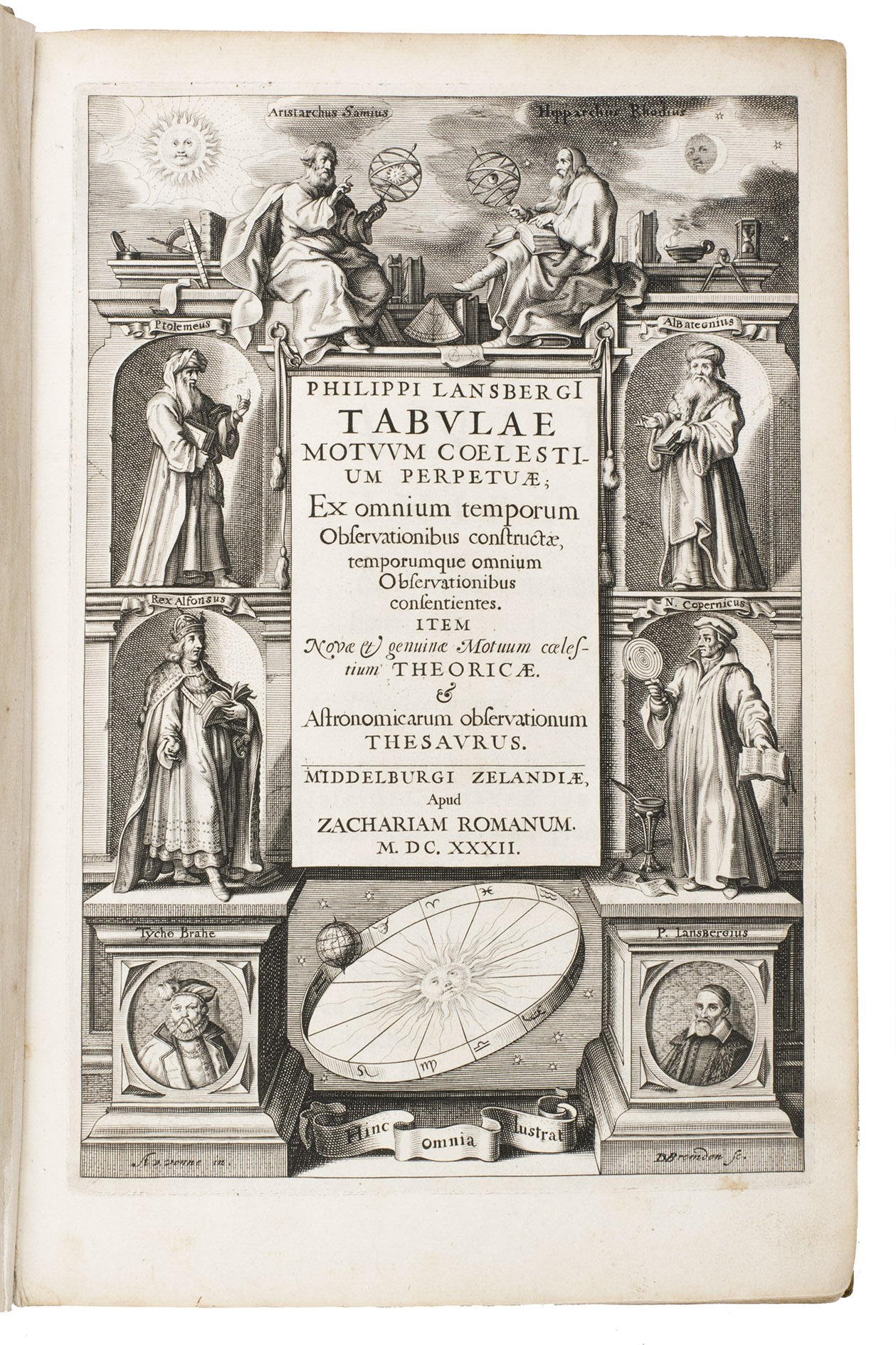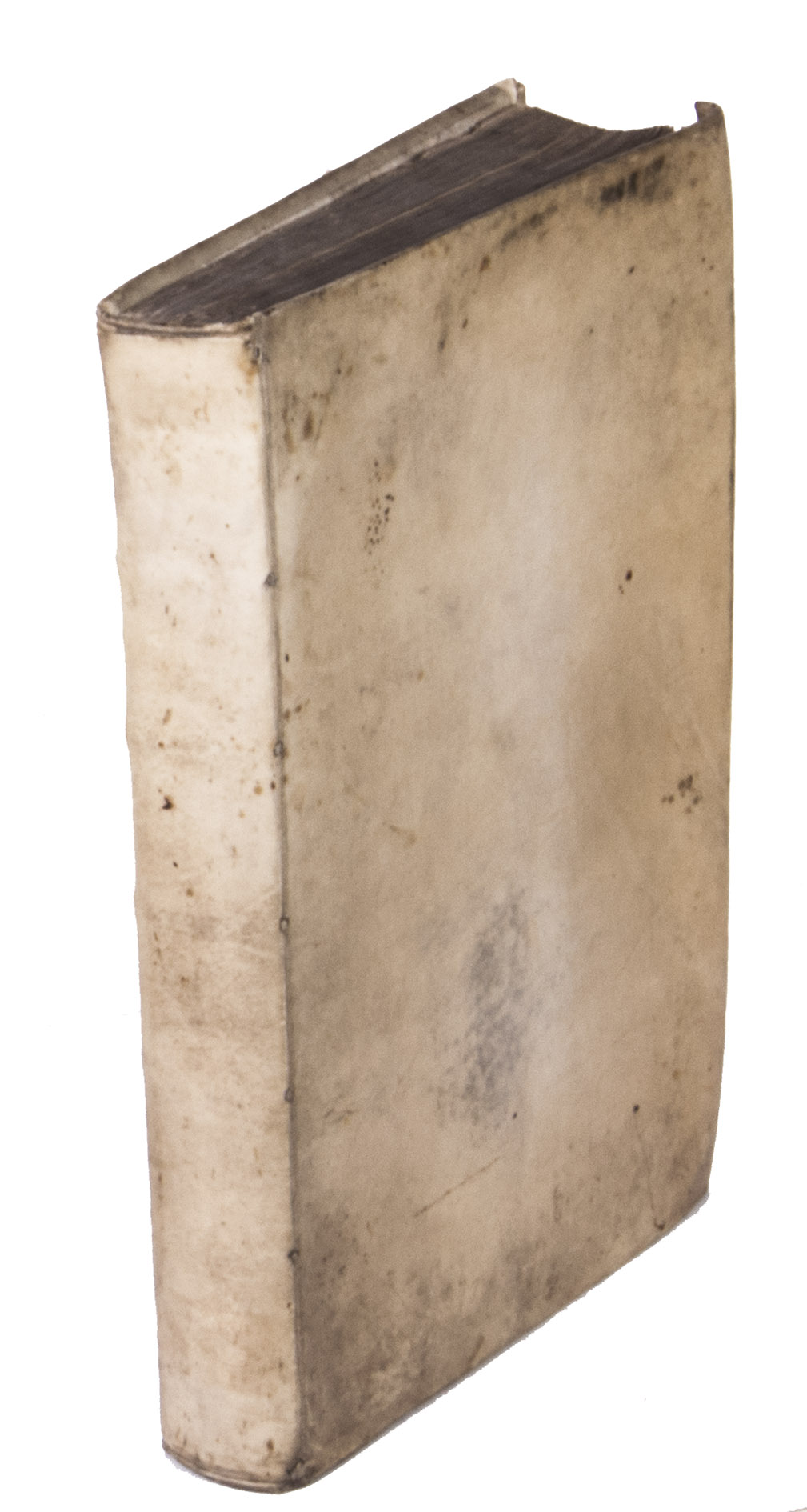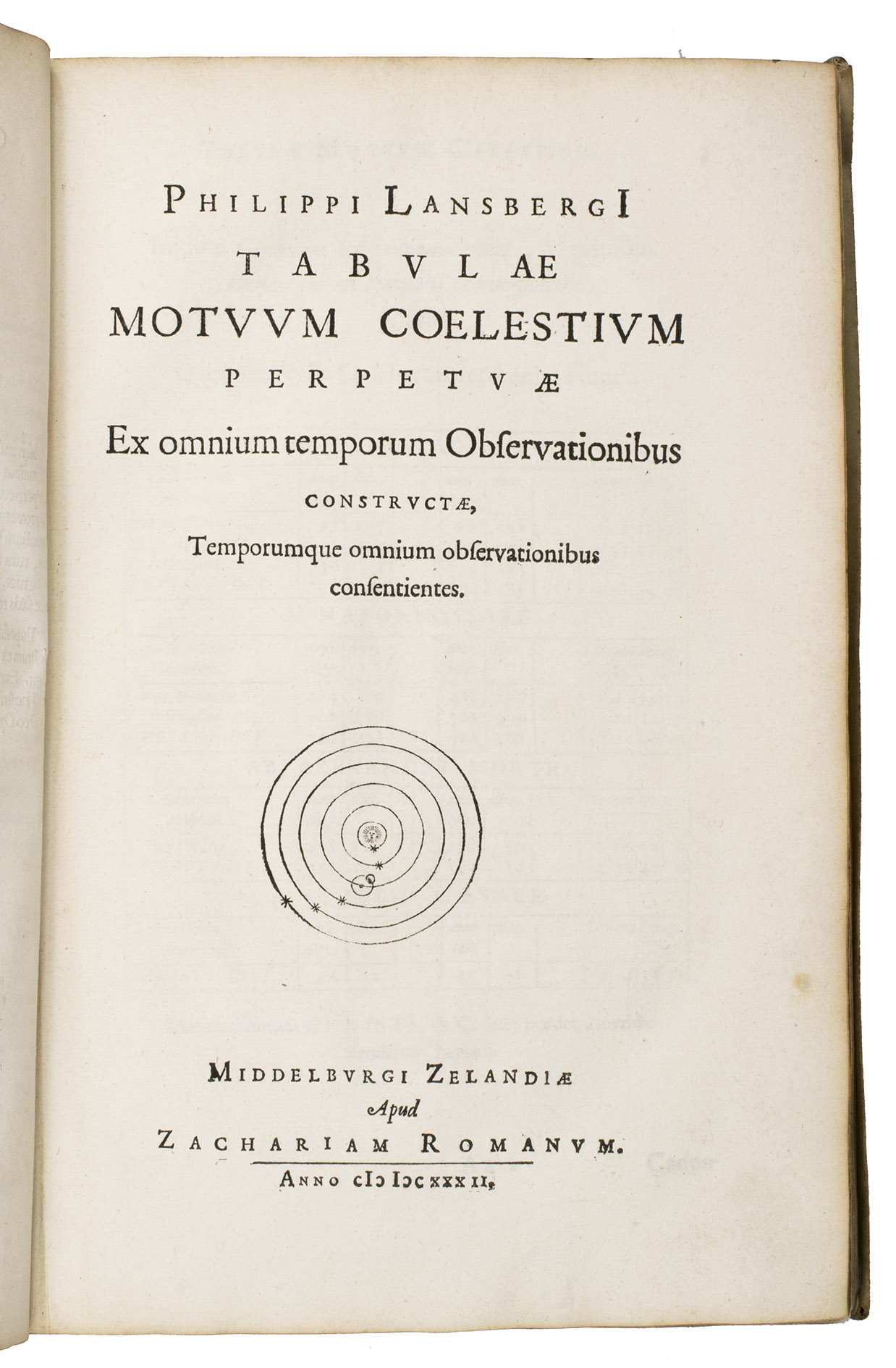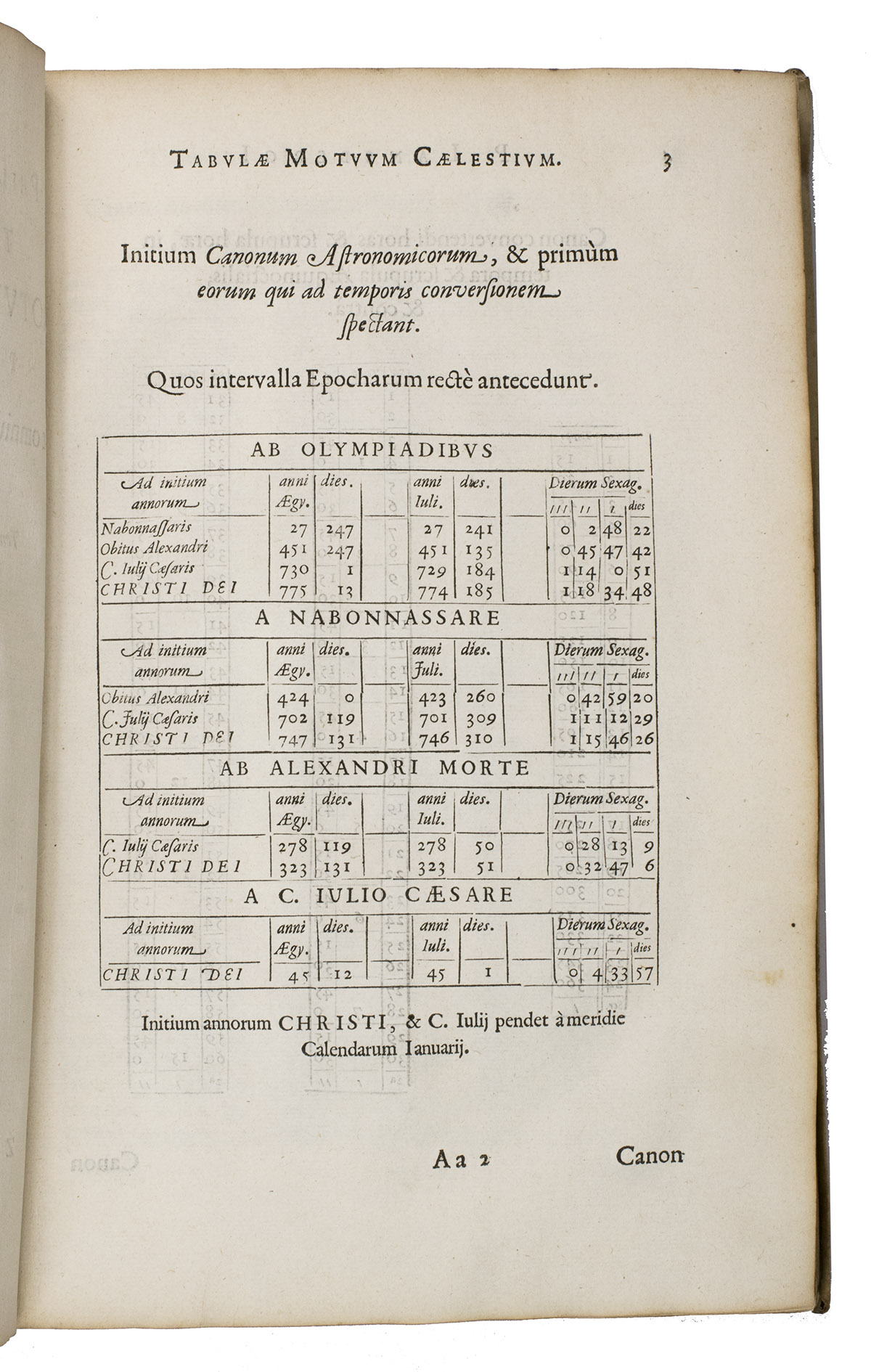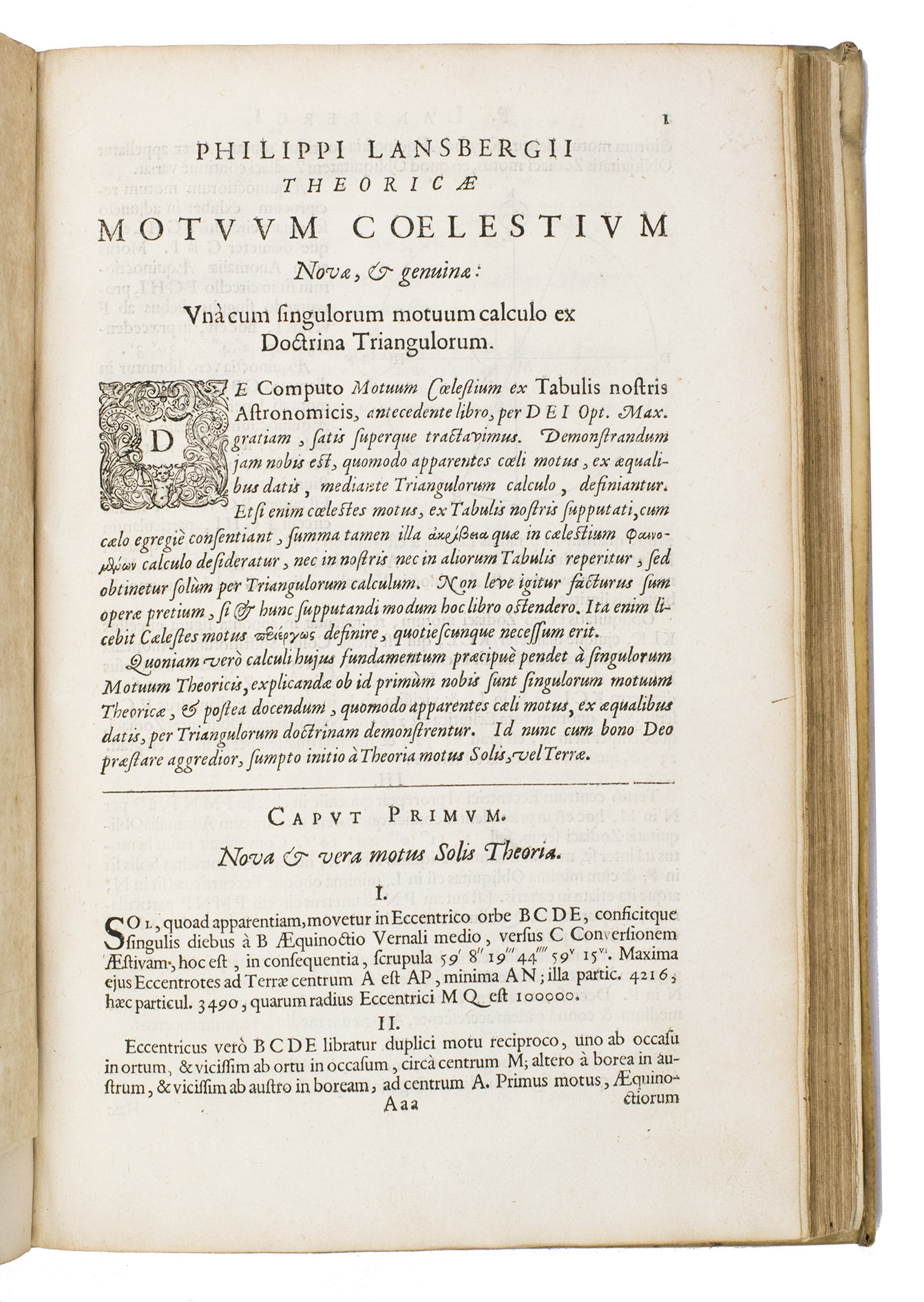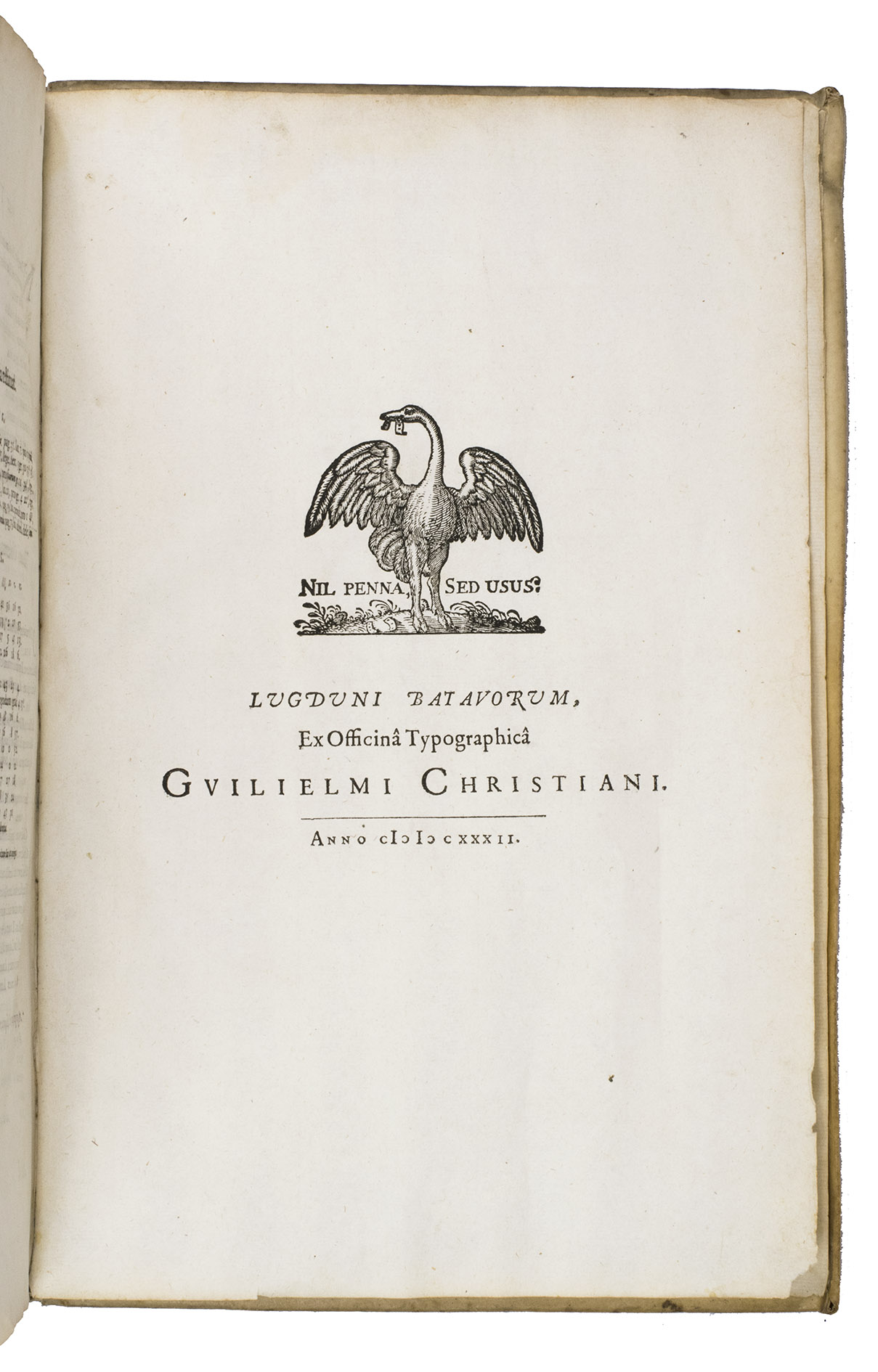LANSBERGE, Johan Philip.
Tabulae motuum coelestium perpetuae ...
Middelburg, Zacharias Roman (colophon: Leiden, Willem Christiaens van der Boxe), 1632. 3 parts in 1 volume. Folio. With an engraved title page, an engraved full-page portrait of the author, a divisional title page for the tables with a small woodcut figure representing the solar system as a vignette, a folding letterpress table (all within collation). Further with numerous figures and tables in the text, several woodcut decorated initials, and woodcut head- and tail-pieces. Contemporary overlapping vellum. 79, [1 blank]; 180, [1 folding leaf]; 186, [5], [1 blank] pp.
€ 6,500
First edition of the astronomical tables by Johan Philip Lansberge (or Philippus Lansbergius, 1561-1632), one of the most famous mathematicians and astronomers of the Dutch Republic during its Golden Age. His tables were meant to allow the computation of the position of the then known planets. The work was very popular with astronomers due to its ease of use. It consists of three parts which contain theoretical discussions, tables, and astronomical observations. The present copy also includes the folding table.
Lansberge was was one of the first defenders of the heliocentric system in the Netherlands and gained international renown for it. His Commentationers in motum terrae diurnum, & annuum (1629), in which he presented the Copernican solar system to a popular audience, became a best-seller. Nevertheless, he could not accept Johannes Kepler's (1571-1630) theory of elliptical orbits. After Kepler published his Rudolphine tables in 1627, Lansberge set out to create his own based on the epicyclic theory. The present work, which contains these tables, was first published in 1632 and was widely adopted in the 1630's until his projections were found to be generally less accurate than Kepler's. However, the Tabulae were used by the English astronomer Jeremiah Horrocks (1618-1641) to observe the Transit of Venus in December 1639, which Lansberge had correctly predicted. This lead to a revision of Kepler's tables.
With contemporary annotations in the margins of part 1, and on page 4 and 5 of part 3. The vellum is somewhat rubbed and stained. Both pastedowns are slightly torn along the edges of the turn ins, the title page has been restored in the inner margin, the lower outer corner of page 29 in the second part has torn without affecting the text, the folding table has browned, some leaves are slightly water stained in the lower margin. Otherwise in very good condition. Bierens de Haan 2672; Hoogendoorn, Bibliography of the exact sciences in the Low Countries, LansP09.1; Houzeau & Lancaster 12758; Poggendorff I, 1373; STCN 83109379X (7 copies).
Related Subjects:
